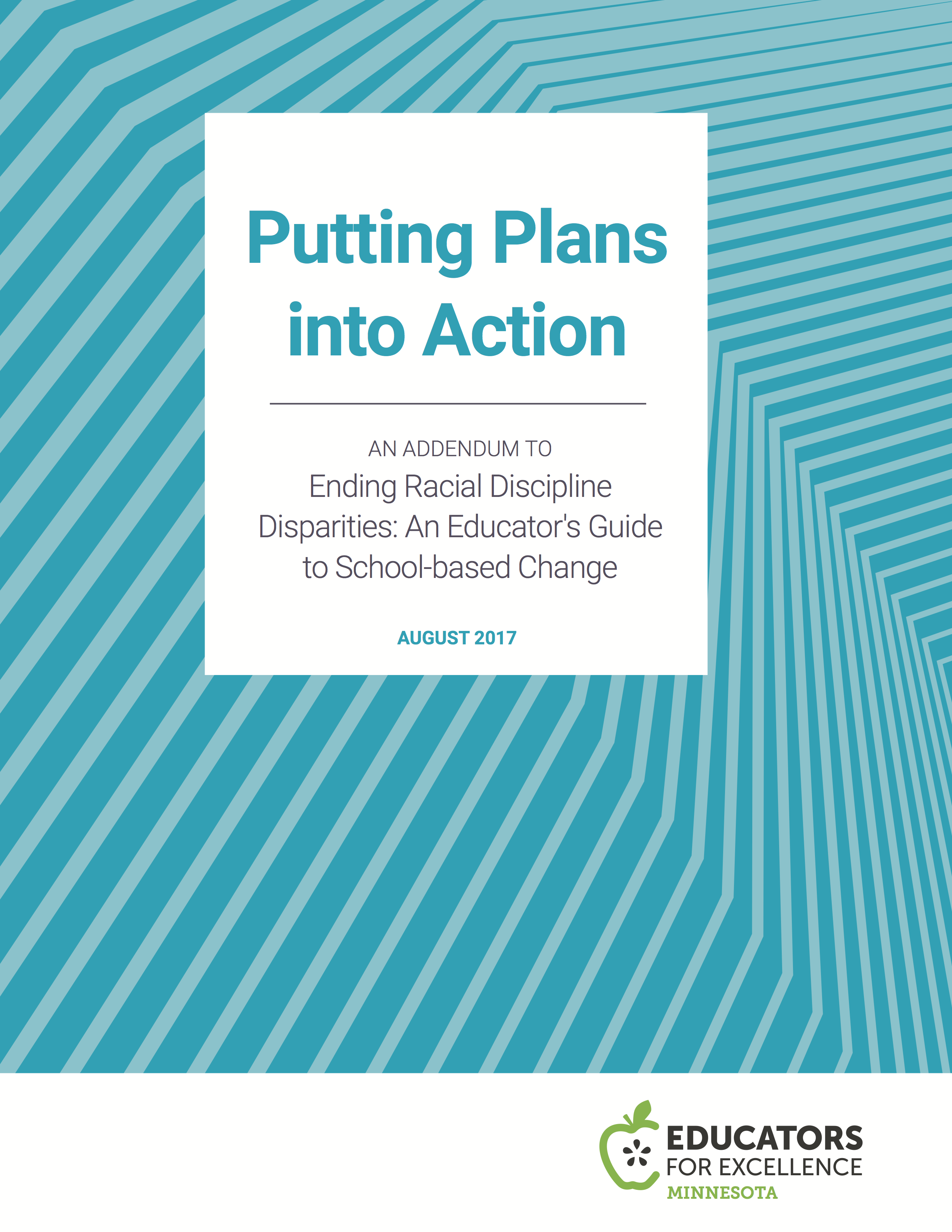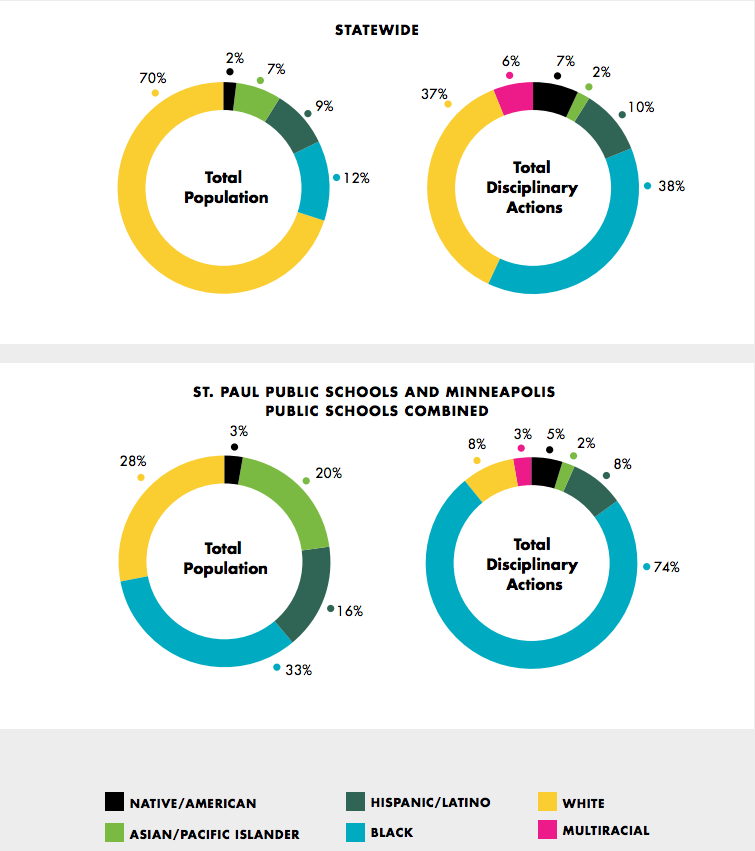
Ending Racial Discipline Disparities
An Educator’s Guide to School-Based Change
April 2016

Recommendations:
- Work relentlessly to get the right people on board from the beginning, especially school leaders;
- Fully leverage behavior and engagement data throughout the Action Guide process;
- Work with leadership to secure key resources, such as training and planning time, early in the process.
The 2016 Action Guide

Download the 2016 Action Guide | View Press Release
During the 2012–13 school year, Minnesota administrators suspended 45,964 students, resulting in 109,495 missed instructional days. Forty percent of those suspended were Black students, even though they comprise only nine percent of the student population. While we applaud steps taken to ban suspensions in grades K-5, we know that schools and teachers need more resources to fully address this issue.

To further the impact of these policy shifts, we as educators and school leaders must commit to explore our biases, to learn about and use alternatives to exclusionary practices, if we are to succeed in eliminating racial disparities in discipline and student achievement. We were inspired to study school discipline practices to learn about what is working and what is not to reduce discipline disparities. We wrote this action guide for educators ready to start making positive changes to better serve black and brown students in their schools.
Recommendations:
-
Create an equity or school climate team.
-
Work with school leadership to secure necessary resources, such as access to data or a specific meeting time, and secure buy-in.
-
Review student engagement and school discipline data.
-
Conduct a holistic analysis of school programs and what is currently being done to address racial disparities in disciplinary data.
-
Learn from successes in other schools by conducting field research or by reading case studies from across the country.
-
Establish a vision, set SMART (specific, measurable, achievable, realistic, and time-bound) goals and measures for success.
-
Select strategies and create an action plan.
- Monitor implementation progress.
About the Teacher Action Team
We are a team of 17 educators from Minneapolis and St. Paul who met over the course of six months. To learn more about the local implementation of discipline policies, we surveyed 212 educators across Minnesota during the fall of 2015. We collected input about alternatives to classroom removal and suspension, identified which were working well and what additional supports were needed. Using that information, along with our summer research and own experiences, we set to work putting together this action guide.
Yomarie Arroyo Rivera 5th-grade Teacher at Riverview West Side School of Excellence
Colleen Atakpu High School Math Teacher at Twin Cities Academy High School
Judy Brown Social Worker at Follwell Arts Magnet
Brenda Burnside Restore Room Coordinator at Roseville Area Middle School
Teresa Fenske 4th-grade Teacher at Valley View Elementary School
Sarah Hunter Teacher On Special Assignment (TOSA) at Anne Sullivan Communication Center
Alex Jacques Vocal Music Teacher at Columbia Academy and Columbia Heights High School
James Kindle New-to-country Accelerated Bilingual Academic Development (NABAD) program 3rd-5th-grade Teacher at Anne Sullivan Communication Center
Mary Lambrecht 3rd-5th-grade Math Teacher at Anne Sullivan Communication Center
Anna Landes Benz Academic Director for the M.S. CRNA program at St. Mary's University, Former Special Education Teacher
Cristin Murphy Special Education Teacher at Roseville Area Middle School
Ayoub Nigatu School Counselor at Ramsey Middle School
Meera Patel Pre-kindergarten Teacher at Riverview West Side School of Excellence
Maetzin Saenz Multilingual Education Assistant at Harding High School
Michelle Sandler 2nd-grade Teacher at Woodcrest Elementary Spanish Immersion School
Meghna Sohoni 5th-grade Teacher at Richard Green Central Park School